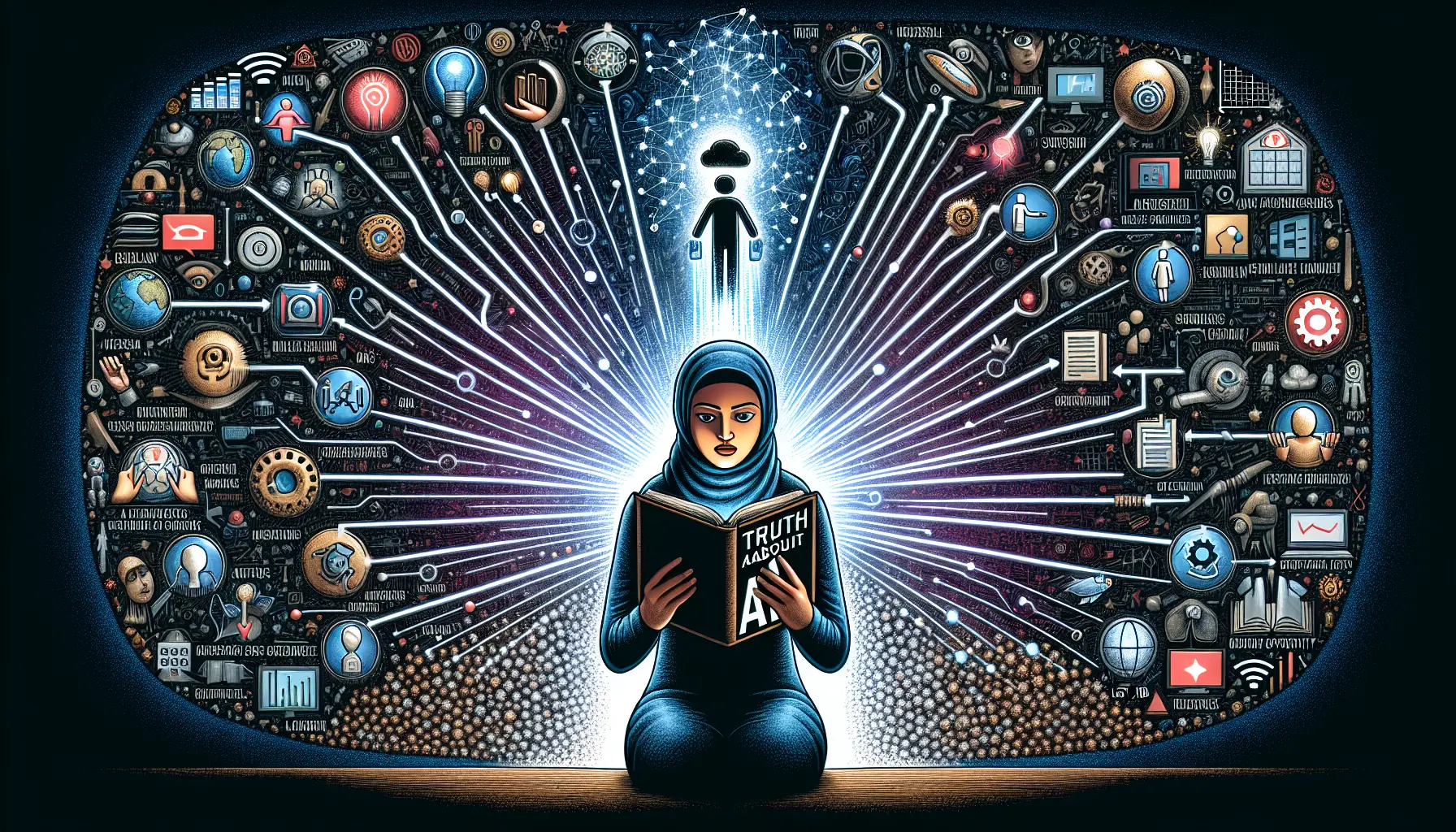
Estimated reading time: 8 minutes
Key Takeaways
- Understanding AI: AI is a tool that enhances human capabilities rather than replacing them.
- Job Transformation: AI automates tasks but creates new job categories, leading to job transformation.
- Data Dependency: High-quality data is essential for effective AI performance.
- Myth Busting: Many common AI myths stem from misunderstandings and media sensationalism.
- Future Outlook: Realistic expectations about AI's capabilities are crucial for its successful implementation.
Table of Contents
The Reality Behind Artificial Intelligence
Misconceptions about artificial intelligence spread rapidly across social media, news outlets, and casual conversations. These AI myths shape public perception, often leading to either excessive fear or unrealistic expectations about what AI can actually do. Let's examine the facts and separate truth from fiction in the world of artificial intelligence. Source
What Makes Something an AI Myth?
An AI myth typically stems from incomplete information, media sensationalism, or misunderstandings about technical capabilities. These misconceptions often oversimplify complex technological concepts or exaggerate potential risks and benefits. Popular culture, especially science fiction, contributes significantly to these misunderstandings by portraying AI capabilities that remain far beyond current technological reality. Source
Common AI Myths: Debunked
The Job Replacement Myth
Many fear that AI will eliminate human employment entirely. The reality? AI primarily automates specific tasks, not complete jobs. For example, in healthcare, AI assists radiologists by flagging potential issues in medical images, but it doesn't replace the doctor's expertise in diagnosis and patient care.
- Reality: AI creates new job categories while automating routine tasks
- Fact: 85% of jobs that will exist in 2030 haven't been invented yet
- Truth: Automation leads to job transformation rather than elimination
The Consciousness Misconception
Despite advances in natural language processing, AI systems don't possess consciousness or genuine understanding. They process patterns in data without comprehending meaning the way humans do. ChatGPT might write a poem, but it doesn't experience emotions or understand the poetry's deeper significance.
The Unbiased Decision-Making Myth
AI systems reflect the biases present in their training data. If historical data contains societal prejudices, the AI will likely perpetuate these biases unless specifically designed to identify and correct them. Source
Essential Facts About AI
AI as a Tool
AI functions as an enhancement to human capabilities rather than a replacement. Consider how:
- Predictive text helps writers but doesn't replace creative thinking
- AI-powered diagnostic tools support medical professionals' judgment
- Automated data analysis augments human decision-making
The Data Dependency Reality
AI systems require extensive, high-quality data to function effectively. Poor or biased data leads to unreliable results. Organizations must invest in data quality and governance to achieve meaningful AI outcomes. Source
Real-World AI Applications
AI technology extends far beyond tech companies:
- Healthcare: Medical imaging analysis and drug discovery
- Agriculture: Crop yield optimization and pest detection
- Education: Personalized learning paths and assessment
- Environmental protection: Climate modeling and resource management
Identifying Reliable AI Information
To avoid falling for AI myths:
- Verify claims through peer-reviewed research
- Consider the technical feasibility of AI capabilities
- Look for specific, measurable results rather than vague promises
- Follow reputable AI researchers and organizations
The Future of AI: A Balanced Perspective
While AI continues to advance, its development follows a predictable pattern of technological innovation. Understanding current limitations helps set realistic expectations for future developments. Organizations implementing AI successfully focus on specific, well-defined problems rather than attempting to create general-purpose artificial intelligence. Source
Taking Action
Stay informed about AI developments through reliable sources:
- Academic institutions' research publications
- Industry reports from established organizations
- Technical documentation from AI developers
Share your experiences with AI implementations and help others understand the technology's real capabilities and limitations. By spreading accurate information, we can build a more informed understanding of artificial intelligence's role in society. Source
Frequently Asked Questions
What are some common myths about AI?
Common myths include the belief that AI will replace all jobs, that AI systems are unbiased, and that AI possesses consciousness.
How can I identify reliable AI information?
Look for peer-reviewed research, reputable sources, and specific, measurable results to identify reliable AI information.
What role does data play in AI?
Data is crucial for AI systems; high-quality data leads to better performance, while poor data can result in unreliable outcomes.
Can AI be biased?
Yes, AI can be biased if the training data contains biases. It's essential to design AI systems to identify and correct these biases.
What is the future of AI?
The future of AI involves continued advancements, but organizations must focus on specific problems and set realistic expectations for AI capabilities.









